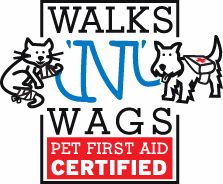 Monday, December 2
Monday, December 2 Dog Training Sutras for Greeting New Dogs
Here are a few of my dog training secrets... I use these techniques every time I greet a non-human animal. Even if I've met that animal 1000 times. I even used this on an allegedly moody horse who kissed the top of my head. Good thing I didn't know she was moody or I probably wouldn't have gotten that close. By the way, the picture below came up for the google search "dog tao".

1) To be fully aware of all animals in an environment, their locations, and their state of being (excited, calm, scared, etc.) is a skill that all non-human animals excel at. When you possess this skill, animals will have a more trusting time relating to you and will sense it right away.
2) To enter someone’s home and to not make direct eye contact with their non human animals is the most respectful way to greet them. This shows your compassion towards fearful animals, and your thoughtfulness towards the excited ones who run out of control.
3) It is not enough to not make eye contact when entering the home, you must also never walk in a straight line to or past the dog. Straight line motion can trigger a fight/flight response because it is considered conflict seeking.
4) For these reasons it is terribly unwise to teach children to greet new dogs by extending their hands towards their face. It is much wiser for the child to stand still and wait for the dog to approach them.
5) Upon greeting a new dog, recognize that your attention alone will reward it for whatever it is doing in that moment. Excited dogs that jump on people received affection for it as puppies. Fearful dogs that cower at unfamiliar voice or eye contact will feel slightly more comfortable if you do neither.
6) For dogs that jump on people, it is best to practice non-reactivity to the jumping. Advancing towards the dog and retreating from the dog are reactions, and unconscious reinforcements towards the dog’s behaviour. It is therefore best to turn your back towards the dog, then praise him when he’s not jumping if you don’t want him to jump on you.
7) For dogs that are fearful of people, it is best to show it your peaceful intentions by exaggerating no eye contact and non-straight line motions around it if you’re moving.








